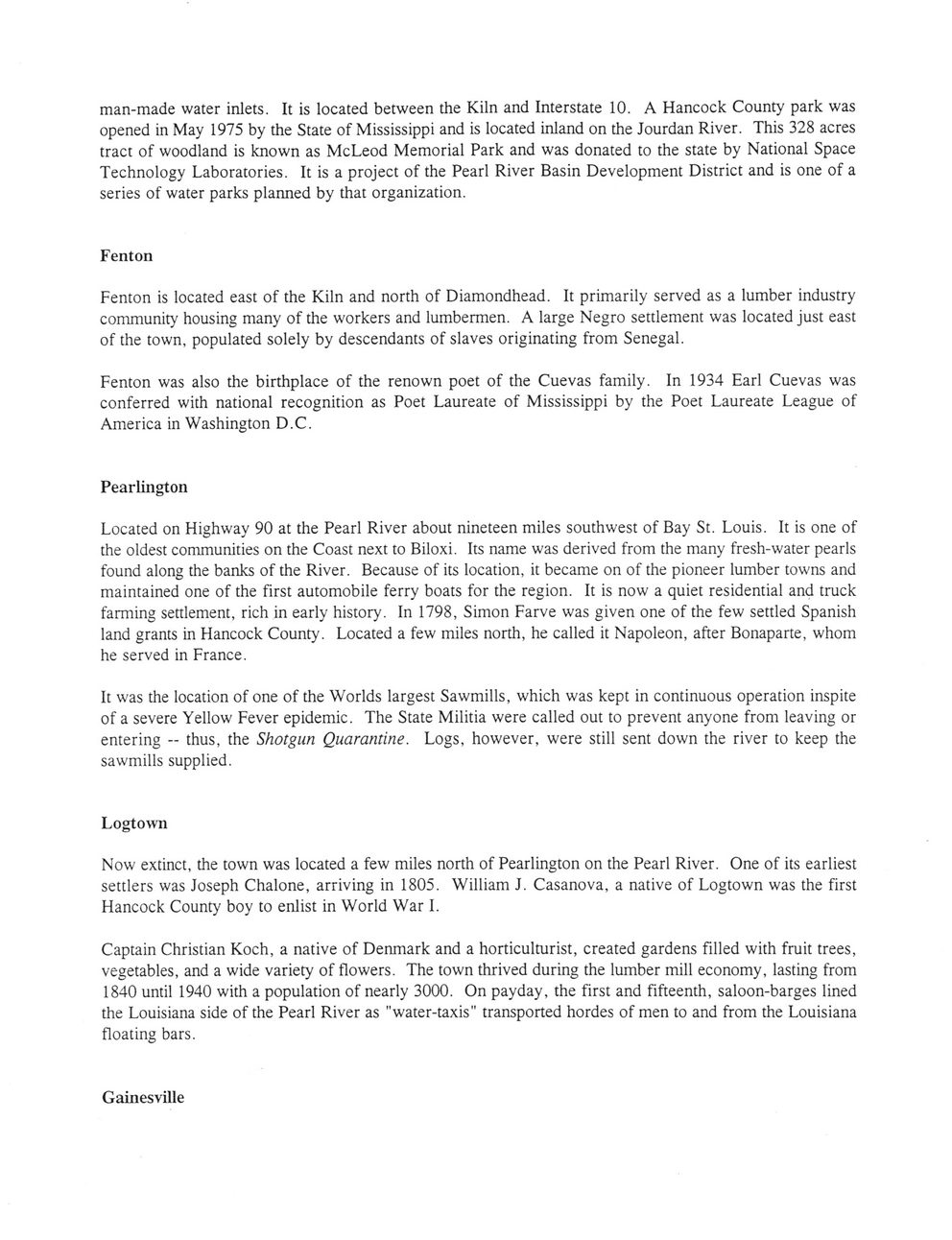This text was obtained via automated optical character recognition.
It has not been edited and may therefore contain several errors.
man-made water inlets. It is located between the Kiln and Interstate 10. A Hancock County park was opened in May 1975 by the State of Mississippi and is located inland on the Jourdan River. This 328 acres tract of woodland is known as McLeod Memorial Park and was donated to the state by National Space Technology Laboratories. It is a project of the Pearl River Basin Development District and is one of a series of water parks planned by that organization. Fenton Fenton is located east of the Kiln and north of Diamondhead. It primarily served as a lumber industry community housing many of the workers and lumbermen. A large Negro settlement was located just east of the town, populated solely by descendants of slaves originating from Senegal. Fenton was also the birthplace of the renown poet of the Cuevas family. In 1934 Earl Cuevas was conferred with national recognition as Poet Laureate of Mississippi by the Poet Laureate League of America in Washington D.C. Pearlington Located on Highway 90 at the Pearl River about nineteen miles southwest of Bay St. Louis. It is one of the oldest communities on the Coast next to Biloxi. Its name was derived from the many fresh-water pearls found along the banks of the River. Because of its location, it became on of the pioneer lumber towns and maintained one of the first automobile ferry boats for the region. It is now a quiet residential and truck farming settlement, rich in early history. In 1798, Simon Farve was given one of the few settled Spanish land grants in Hancock County. Located a few miles north, he called it Napoleon, after Bonaparte, whom he served in France. It was the location of one of the Worlds largest Sawmills, which was kept in continuous operation inspite of a severe Yellow Fever epidemic. The State Militia were called out to prevent anyone from leaving or entering - thus, the Shotgun Quarantine. Logs, however, were still sent down the river to keep the sawmills supplied. Logtown Now extinct, the town was located a few miles north of Pearlington on the Pearl River. One of its earliest settlers was Joseph Chalone, arriving in 1805. William J. Casanova, a native of Logtown was the first Hancock County boy to enlist in World War I. Captain Christian Koch, a native of Denmark and a horticulturist, created gardens filled with fruit trees, vegetables, and a wide variety of flowers. The town thrived during the lumber mill economy, lasting from 1840 until 1940 with a population of nearly 3000. On payday, the first and fifteenth, saloon-barges lined the Louisiana side of the Pearl River as "water-taxis" transported hordes of men to and from the Louisiana floating bars. Gainesville

Ellis, Dan 008